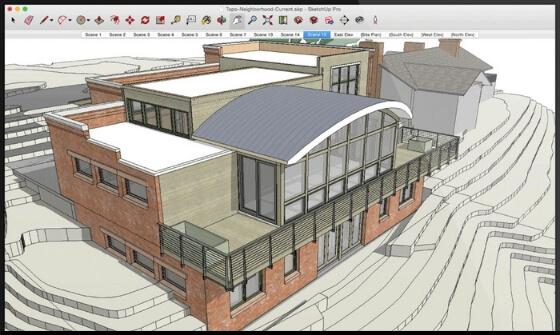Light Up Software Sketchup
Interior Lighting with LightUp for SketchUpBy Adam BllyardThe following tutorial will take you step by step through the process of rigging lighting in SketchUp for rendering in. LightUp for SketchUp is a SketchUp plugin that adds realistic, realtime lighting to your SketchUp models. This particular model was used on a Italian 3ds Max/V-Ray site and is called the ‘Tatami Room’. We will use it in this tutorial.You can download the SketchUp model if you want to follow along. Its available on the LightUp website.
After downloading it, open up the file in SketchUp and open the LightUp preferences dialog. More Definition in Sun ShadowsAdding in Ambient OcclusionOK, next we are going to blend in some Ambient Occlusion (AO) to give some fill-in lighting. We do this by opening the LightUp preferences and changing the drop-down menu for “Combine with AO” to “Screen”.You will see that an extra menu unfolds to reveal the parameters for AO. AO works by calculating how much non-directional local shadowing there is. It does this by searching for nearby geometry that could occlude the ambient lighting in your scene, so it is normal to give some cut-off beyond which the software won’t search.The reason this is particularly neccessary for interior models is because all of your scene is oclluded a little which would result in total blackness. So in LightUp, the preset “Interior” searches for 10% of the size of your model, “Exterior” for the full size of your mode, and “Custom” allows you to input an absolute distance beyond which not to search.We’ll start with “Interior” and leave everything as the default.
Light Up Software Sketchup Free

Go ahead and press Tourtool. More Natural LookReflectionsWith the lighting pretty much there, we want to turn our attention to editing our materials to add reflections. First up is the glass table in the center of the room.
Lightup For Sketchup 2018 Crack
While in Tourtool, we can click on any material we see to edit it’s properties.The table top uses a material that is just used on flat surfaces – the table itself, so LightUp can automatically generate realtime reflections for it. By adding Specular and Fresnel, we can now see the table reflect the room in a realistic manner. Add Specular and FresnelThe couch at the back of the room has a curved metal frame which we also want to set as reflective. Because the material is on a curved geometry, we’ll need to place a LightUp IrrCache nearby to capture the surrounding lighting to be used for realtime reflections.The technique used in LightUp to place an IrrCache, is first to navigate down the Group/Component Instance hierarchy to the object you wish to make reflective. An IrrCache Component is then added nearby and the IrrCache and Component you wish to be reflective all Grouped together.